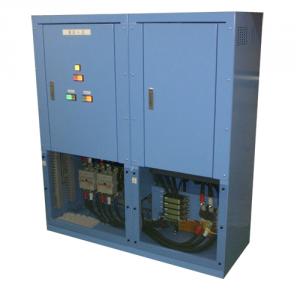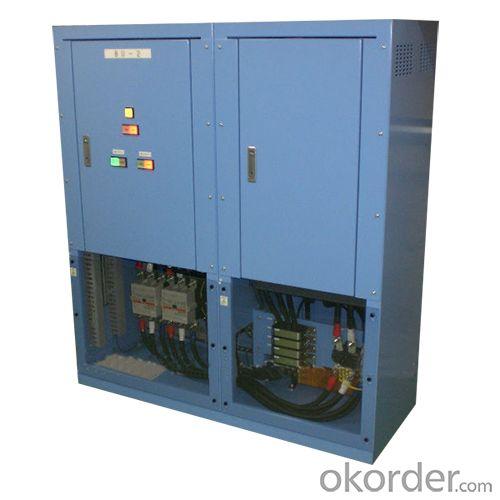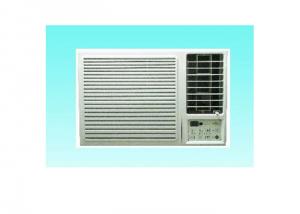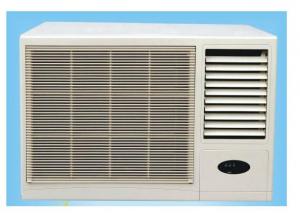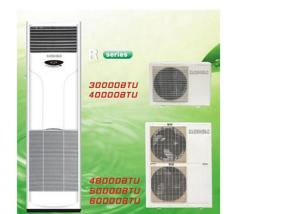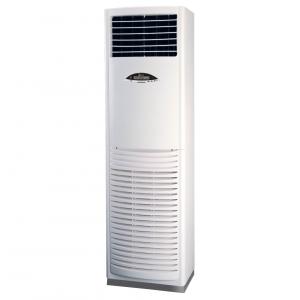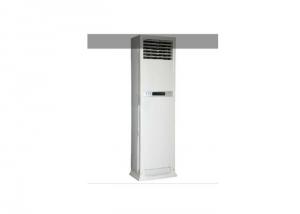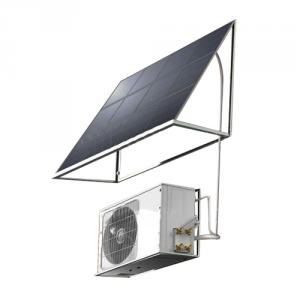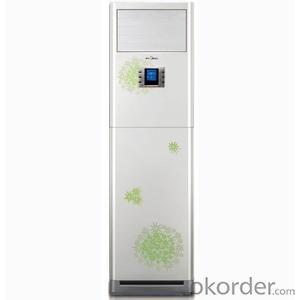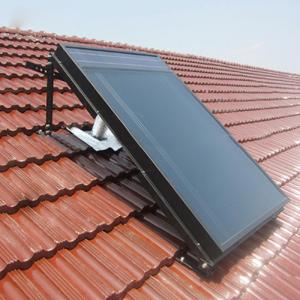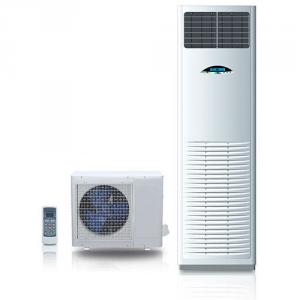Energy Saving System Support For Central Air Conditionig
- Loading Port:
- Niigata/Tokyo/Yokohama
- Payment Terms:
- T/T
- Min Order Qty:
- 1 Unit set
- Supply Capability:
- 20 Units per Year set/month
OKorder Service Pledge
OKorder Financial Service
You Might Also Like
Eco-vision air conditioner for energy saving system support
+++ The eco-vision Central Air Conditioning Energy Conservation System
+++ offers customers
1) a high rate of reduction in energy usage using our patented technology
2) reliable verification
3) remote operation (safety support).
+++ Our technology reduces energy use by approximately 65-95%.
The system achieves both decreased CO2 levels and lowers your electric bills without altering the normal operation method of the air conditioner.
+++ An eco-vision control panel installed outdoors at a shopping center.
+++ eco-vision installed at a hospital.
Control panel includes an inverter,PLC (programmable logic controller), electric control circuits, and a communications router.
+++ Principles of electric power reduction:
The pump's electricity consumption is equal to the flow control rate cubed.
As the graph shows, a flow rate of 1/2 corresponds to 1/8 (12.5%) electricity usage;
a flow rate of 1/4 corresponds to 1/64 (1.5%) electricity usage.
When the air conditioner's system load is low, the hot/cold water flow rate is
tightly controlled, yielding an astonishing 80–90% reduction in energy usage.
+++ Operation control when working under heavy system load:
The system loads of building-wide air conditioning systems are always fluctuating.
Ordinary pumps operate at 100% regardless of system load, with a fixed rate
of electricity consumption.
eco-vision's pump flow control regulates power use according to the system load,
allocating as little power as necessary to meet changing system requirements.
This results in decreased electricity consumption, as shown in the image.
(The electricity consumption of the pumps decreases in proportion to the flow rate cubed.)
+++eco-vision system:
eco-vision uses an inverter to regulate the primary hot/cold water pump,
the secondary pump, and the coolant pump.
Computerized sensors installed throughout the system analyze data such as flow rate,
temperature, and pressure to ensure the most precise power control possible, achieving
a high rate of electricity conservation.
+++ After acquiring a patent in Japan, we acquired a patent
+++ in the United States.
+++ Monitor screen:
The eco-vision system constantly monitors the pump operating status and
electricity usage, storing the data and displaying it on this dedicated screen.
+++Graph verifying reduction in electricity use:
This overview graph displays operation data collected daily, monthly,
and yearly, showing at a glance the results of using the eco-vision system.
+++Return on investment:
Electric bills begin to fall the day our equipment is installed.
Although equipment and operating conditions vary, your investment will pay
for itself in about 2.5 to 5 years.
+++ An eco-vision installation at a 26,000m² shopping center
+++ resulted in a 74.5% annual decrease in electricity consumption.
Large reductions in power usage can be expected even for large-scale equipment,
such as for amusement parks.
+++ An eco-vision installation at a 203-room hotel reduced CO2 emissions
+++ by 206 tons in one year. eco-vision is very environmentally-friendly.
+++ An eco-vision installation at a 415-bed hospital reduced annual costs
+++ by 7,800,000 yen. Hospitals that must operate their air conditioning
+++ 24 hours a day can expect similar savings.
+++ An eco-vision installation at a 238-bed hospital decreased
+++ monthly electricity consumption rates by 92.1%.
+++ This table shows eco-vision's achievements in construction.
FAQ
Q1:Why is it important to use home air conditioner filters?
A:Without them you can clog up vital parts of the heating or cooling components that can be difficult to clean out and can cause severe damage that will be much more expensive to repair than the inconvenience of replacing a filter once a month.
Q2:What is VRF Air Conditioning System?
A:VRF air-conditioning systems owe their growing popularity to their ability to meet a wide range of requirements.
- Q: Household air-conditioning outlet temperature is normal?
- All outlet 8 to 14 degrees.In and out of the air temperature is in commonly 10-15 degrees
- Q: What is the power of general household air conditioning?
- Several different power are different. Generally can be determined according to the 1 kw/horse, such as 1 piece of air conditioning and refrigeration power will be about 1 kw; Two horses air conditioning refrigeration power will be about 2 kw. Standard of consumed power in air conditioning nameplate with annotations.
- Q: How do I control the temperature zone in a multi-story building with air conditioners?
- To achieve optimal comfort for all occupants in a multi-story building with air conditioners, a systematic approach to controlling the temperature zone is necessary. The following steps can help you accomplish this: 1. Gain a thorough understanding of the building's HVAC system: Familiarize yourself with the layout and operation of the air conditioning system. Determine whether it is a centralized system or if each floor has its own units. This knowledge will enable you to comprehend how to regulate the temperature in each zone. 2. Divide the building into separate zones: Identify distinct temperature zones within the building based on factors like floor levels, usage patterns, and occupancy. Each zone should be equipped with its own thermostat and controls to independently regulate the temperature. 3. Install programmable thermostats: Utilize programmable thermostats in each zone to establish temperature schedules that align with the occupants' requirements throughout the day. This enables automatic adjustments based on the time, such as reducing cooling during non-peak hours or weekends. 4. Incorporate zoning dampers: If the building has a centralized air conditioning system, consider installing zoning dampers. These allow you to control the airflow to specific zones, ensuring that each area receives the desired temperature level. 5. Implement regular maintenance and inspections: Schedule regular maintenance for the air conditioning units to ensure optimal functionality. This includes cleaning filters, checking for leaks, and promptly addressing any issues. Proper maintenance is key to maintaining efficient temperature control. 6. Educate occupants on energy conservation: Encourage occupants to adopt energy-saving practices, such as keeping windows and doors closed, using blinds or curtains to block excessive sunlight, and utilizing fans to assist with cooling. These practices reduce strain on the air conditioning system and contribute to more effective temperature control. 7. Monitor and make necessary adjustments: Regularly monitor the temperature zones and make adjustments as needed. Take note of any areas that consistently experience issues with temperature control and address them promptly. By following these steps, you can effectively control the temperature zones in a multi-story building with air conditioners, ensuring optimal comfort and energy efficiency for all occupants.
- Q: How is the home air-conditioner maintained?
- Hello! Air conditioning power saving tips: 1. The air conditioning in use process temperature not too low. Because the temperature of the air conditioning control a tuning is lower, the more electricity consumption, so generally reduce the indoor temperature 6 to 7 degrees. 2. Refrigeration at room temperature high 1 degree, heating room temperature low 2 degrees, when all can save electricity above 10%, and almost undetectable to the human body is tiny difference. 3. Set the boot, set high, cold/hot as soon as possible to achieve control; When temperature is appropriate, change medium, low wind, reduce energy consumption, reduce noise. 4. The "ventilation" switch is not in a normally open state, otherwise will increase power consumption. 5. Open doors and Windows can reduce the outside heat into less, to save electricity. 6. The use of air conditioner in the room, it is best to use thick texture of the curtain, to reduce the cold air is lost. 7. Indoor and outdoor machine connecting pipe shall not exceed the recommended length, can enhance the cooling effect. 8. Air conditioner installation should try to choose the nightside of the room, avoid direct sunlight. If you don't have this kind of condition, air conditioner should give the sun shade. 9. Clear the dust on the outdoor heat sink regularly, keep clean. The dust on the heat sink too much, can increase power consumption. The hope can help you!
- Q: What is the average cost of installing an air conditioner?
- The average cost of installing an air conditioner can vary depending on several factors. These factors include the size and type of the unit, the complexity of the installation process, the location and condition of the property, and any additional materials or services required. On average, the cost of installing a central air conditioning system can range from $2,500 to $7,500. This includes the purchase and installation of the unit, as well as any necessary modifications to the existing ductwork or electrical systems. For a window or wall-mounted air conditioner, the average cost of installation can range from $150 to $500, which typically covers the cost of mounting the unit and connecting it to a power source. However, it is important to note that these are just general estimates and the actual cost can vary significantly based on individual circumstances. It is recommended to obtain multiple quotes from reputable HVAC contractors to get a more accurate estimate for your specific needs.
- Q: How to correctly use of household air conditioning pressure gauge
- 1) check for the temperature of the fluid tube and muffler and condensation. Start the air conditioning runs under the condition of refrigeration 20 min, if any condensation on the outdoor unit back to the valve and the muffler, muffler fingered temperature was lower than that for the temperature of the fluid pipe, shows refrigerant in the system is enough, air conditioning running normally. Has one of following cases, indicates lack of refrigeration: (1) for the liquid condensation tube, muffler condensation; (2) for liquid pipe frost; (3) for liquid tube not dewing cool, muffler, nor too cold; (4) for fluid pipe and trachea is not cool. (2) measure the pressure of the valve in the back. Add the pressure gauge connected to air conditioning low pressure Angle valve inlet, measuring its operation at low pressure, under normal circumstances, when the environment temperature is about 30 ℃, refrigeration operation of low pressure is 0.45 ~ 0.55 Mpa, in heat pump air conditioning heating runtime should be 1.8 Mpa, if under the pressure, shows lack of refrigerant. The lower the pressure, the greater the leakage. If the basic pressure, explain refrigerant has. (3) fill nitrogen pressure (1.5 Mpa nitrogen filling the), observe the four two connecting pipe joint, gas liquid valve stem, and whether there is oil stains in areas such as the liquid mouth. There are oil stains for leaks. (4) using the leak detector to find the general part, and then coated with soap and water, if there are air bubbles appeared, to be funnelled namely.
- Q: Are air conditioners safe to use around children and pets?
- Yes, air conditioners are generally safe to use around children and pets. However, it is important to take certain precautions to ensure their safety. Firstly, make sure that the air conditioner is installed properly and securely, keeping it out of reach of children and pets to prevent any accidents. Additionally, it is recommended to regularly clean and maintain the air conditioner to prevent the accumulation of dust, mold, or other allergens that could potentially harm children or pets. It is also important to keep the temperature at a comfortable level and avoid extreme temperature changes, as this can sometimes affect the health of children and pets. Overall, as long as proper safety measures are taken, air conditioners can be used safely around children and pets.
- Q: Can an air conditioner be used to cool multiple rooms or a whole house?
- Yes, an air conditioner can be used to cool multiple rooms or a whole house, depending on its capacity and the layout of the space. Central air conditioning systems are designed to cool multiple rooms or an entire house by distributing cool air through ductwork. Additionally, certain types of portable or window air conditioners can also be used to cool multiple rooms, but their effectiveness may vary depending on the size and layout of the space.
- Q: Household air conditioner have drainage pumps?
- No drainage pumps, that is a water dish, water dish of water through the pipe flow naturally closed.
- Q: What is the latest technology air conditioning?
- Is the fourth generation of arc evaporator air conditioning the latest technology. Air conditioning evaporator has experienced four innovation development, are the first generation: upright; The second generation: folding stages; The third generation: many stages; The fourth generation: arc.
Send your message to us
Energy Saving System Support For Central Air Conditionig
- Loading Port:
- Niigata/Tokyo/Yokohama
- Payment Terms:
- T/T
- Min Order Qty:
- 1 Unit set
- Supply Capability:
- 20 Units per Year set/month
OKorder Service Pledge
OKorder Financial Service
Similar products
Hot products
Hot Searches
